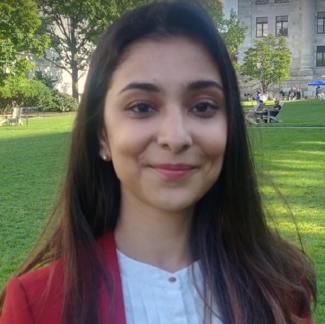
Harvinder Kumar, a 33-year-old farmer from Aligarh, diagnosed with acute promyleocytic leukemia, was brought in a critical state to AIIMS Hospital, Delhi. With timely medical attention, he was given a second lease of life. Read about the teamwork and empathy that enabled his treatment and subsequent recovery and an interview with the attending doctor.
In 2019 when Harvinder Kumar, a 33-year-old farmer from Aligarh who was diagnosed with acute promyleocytic leukemia (APL), a rare blood cancer characterized by an abnormal proliferation of white blood cells, was brought by family to the All India Institute of Medical Sciences (AIIMS), Delhi, he was critical and extremely fragile. He lay unconscious, bleeding profusely from his nose, his haemoglobin dangerously low bordering on 4 grams per deciliter (g/dl) which could lead to heart failure and death. He desperately needed blood to survive but did not have the money for any further treatment.
When his condition started deteriorating rapidly in the OPD, his relatives wanted to leave the hospital, fearing he would die soon. They had anyway exhausted all their savings and had slender hope for his survival. Harvinder had left behind his three young daughters at Aligarh and had only one wish - to hug them before he breathed his last.
His family were all set to abandon treatment and leave the hospital halfway, when Vivek Kumar Singh, Medical Social Service Officer (MSSO) at AIIMS ran into them. On hearing their pitiable state, he realised that Harvinder was a LAMA (leave against medical advice) patient.
On further examination and consultation with the haematologist, Vivek learnt that Harvinder’s life could be saved with adequate medical care and attention. He also got to know that Harvinder had two blood donor cards but, being unaware, was unable to take advantage of it. Vivek discussed the case with the Chief of Medical Social Welfare Unit - AIIMS, took help from Social Service Officer of Blood Bank, secured the funds from the charitable trust of AIIMS and ensured that Harvinder got all the support needed.
With appropriate treatment, Harvinder was shifted from the emergency to the general ward and was soon in remission. Within months, he was able to get back home in Aligarh with his daughters.
“I am extremely grateful to Vivek Sir, Dr Tejasvini and AIIMs hospital for saving my life,” he said humbly. “Today I am absolutely healthy and able to do my work without any complaints.”
Interview with Dr. Tejasvini Vaid
You played a crucial role in saving the life of Harvinder Kumar. What was Harvinder’s condition when he was brought to AIIMS?
I was a resident in the Department of Hematology when I treated Harvinder. He was very sick when he had presented to us. He had fever and significant bleeding. He needed medicines to maintain normal blood pressure. His hemoglobin and platelets were very low.
What was the stage of his disease?
Unlike some other cancer, the severity of APL is not described in stages. The severity of APL can be described as “high-risk” or “low-risk” based on the white blood cell count. His was a low-risk disease.
What treatment was administered to save his life?
Harvinder’s treatment was truly a team work. He was started on two medicines called all-trans retinoid acid and arsenic trioxide immediately for the cancer. While patient’s cancer treatment is going on, their bone marrow is unable to produce normal blood cells and they often need supportive therapy with blood products to control bleeding or for low haemoglobin and antibiotics to control infections. Similarly, he needed a lot of blood products to improve his haemoglobin levels and platelet counts and to stop his bleeding. Supportive treatment was also given for infections. It was a joint effort by the Department of Hematology, Department of Social Service and Blood Bank that made his treatment a success.
Was he in complete remission after treatment? What is the follow-up treatment advised for him?
Yes, he was in complete remission after treatment. Once he finished his induction and consolidation phases, he did not need any further treatment and was declared cancer-free.
Could tell us a bit about acute promyelocytic leukemia (APL)?
Acute promyleocytic leukemia is a type of rapidly progressing blood cancer that needs to be treated on urgent basis. Blood is made up of different cells that are produced in the bone marrow. In patients with APL, the bone marrow produces abnormal cancerous cells instead of normal ones.
How common is APL? Is it the most malignant form of leukemia?
APL is a rare blood cancer. Its annual incidence is about 0.6 to 1 per 1,000,000 people.
What are symptoms and chief complaints of APL?
Patients with APL may experience fatigue and may tire more easily. They may have bleeding from gums, nose or in urine or stools. They may develop fever or infections more easily than normal.
What are the treatment options for APL?
Treatment of APL is done with a combination of chemotherapy and non-chemotherapy based anti-cancer medicines. The drugs most commonly used are daunorubicin, all-trans retinoid acid and arsenic trioxide.
(Doctor Tejasvini Vaid has recently shifted as Associate Consultant, Department of Oncology and Hemato-oncology to Medanta, Gurgaon)







